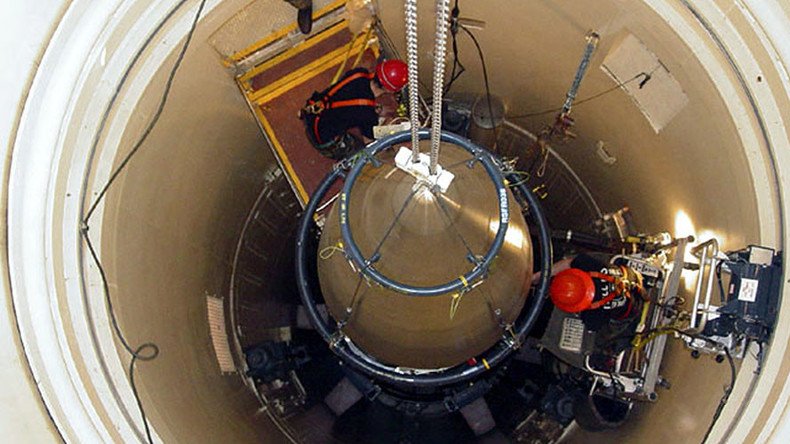Mattis orders reviews of US nuclear stockpile and policies

US Secretary of Defense James Mattis has ordered the military to start work on reviewing the US’s overall nuclear weapons policy document that will guide the Trump administration’s purchases, deployment and management of nuclear weapons.
"Today, Secretary Mattis directed the commencement of the review, [Nuclear Posture Review], which will be led by the deputy secretary of defense and the vice chairman of the joint chiefs of staff, and include interagency partners," Pentagon spokesperson Dana White said in a statement Monday.
"The process will culminate in a final report to the president by the end of the year."
The Pentagon officially launched the Nuclear Posture Review today. Know the basics: https://t.co/FAswwMhU4lpic.twitter.com/2hZXDfNHC7
— Aaron Mehta (@AaronMehta) April 17, 2017
Before President Donald Trump took office, he tweeted that the US “must greatly strengthen and expand its nuclear capability until such times as the world comes to its senses regarding nukes.”
On January 27, in a national security presidential memorandum, Trump ordered a nuclear posture review (NPR) to “ensure the US nuclear deterrent is safe, secure, effective, reliable and appropriately tailored to deter 21st-century threats and reassure our allies.”
The NPR’s conclusions relate to the stockpile, supporting infrastructure and it meant to guide foreign as well as domestic policy.
The US retains about 4,000 nuclear warheads in service, with another 2,800 awaiting dismantlement. Decades of deferring modernization mean that some long-range bombers are more than 60 years old, certain command and control systems are still run on floppy disks and some intercontinental ballistic missile silos have fallen into disrepair, according to Defense One.
NATO is reviewing ‘nuclear playbook’ to deter ‘terrible attacks’ by Russia – Pentagon chiefhttps://t.co/fZBXPBjJOJpic.twitter.com/HyXu2fvnOk
— RT America (@RT_America) September 27, 2016
The Pentagon is preparing to spend billions of dollars over the next 15 years to develop and procure the new B-21 bomber, a new fleet of nuclear submarines, and a new design for intercontinental ballistic missiles, as well as new command and control capabilities as well as new crude missiles, according to Defense News.
The last NPR was completed under the Obama administration in 2010.
Greg Mello, executive director of the Los Alamos Study Group, and a leading expert on nuclear weapons, said about the Obama administration’s NPR that it carefully left open the possibility of nuclear use (either as reprisal or preemptive first strike, as present doctrine allows) “in the event of planned or actual biological attacks that exceed some unspecified threat or danger threshold.”
Melo said “the US government continues to reserve the right to be the first to use nuclear weapons.”
Under the Non-proliferation Treaty, which the US signed during the Johnson administration, and ratified by the Senate and is the law of the land, includes Article VI, which calls for the elimination of nuclear weapons.
“That was the agreement, these other countries would not develop nuclear weapons and the nuclear powers would move to elimination. We are violating that,” former Secretary of Defense McNamara told the Institute of Public Accuracy in 2005.












